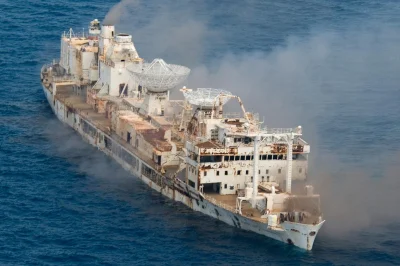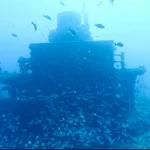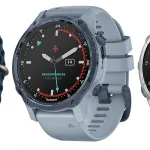Understanding the Vandenberg Wreck Dive

Table of Contents
- Understanding the Vandenberg Wreck Dive
- What Certification Do You Need?
- The Best Time to Dive the Vandenberg
- Common Mistakes Made by Divers at the Vandenberg
- How Deep Can You Dive: Inside the Vandenberg
- Equipment Essentials for Deep Diving
- Preserving Marine Life Around the Wreck
- Future of Diving Expeditions: What’s Next for Vandenberg?
Introduction
Dive into the fascinating world of the Vandenberg Wreck off Key West. Learn what it takes to fully explore this underwater marvel, with insights on necessary certifications and expert tips to enhance your diving adventure.
Understanding the Vandenberg Wreck Dive
Certification Requirements for Diving the Vandenberg Wreck
To dive the Vandenberg Wreck in Key West, specific certification and experience requirements apply:
Certification Levels
- Advanced Open Water Diver Certification: This certification is essential for those looking to dive independently. Divers must show proof of certification and have completed a deep dive (≥60 ft) within the last 12 months.
- Open Water Divers: Open Water certified divers can dive the wreck, but they must do so with a guide and must have recent diving experience (within the past year).
Age and Supervision
- Minimum Age: 15 years old is the minimum requirement for divers.
- Under 18 Requirements: Divers under 18 years of age must either dive with a parent or guardian or be accompanied by a certified guide.
Additional Requirements
- Dive Computer: A dive computer is mandatory for all divers, although rentals are available if needed.
- Guided Dives for Open Water Divers: Open Water-certified divers will require a guide to dive the Vandenberg, which incurs an additional cost of approximately $45 per person.
Recommended Experience
Although the dive is classified as advanced, Open Water-certified divers aged 15 and older who have been actively diving in the recent past may participate with guidance. The site’s depth, approximately 140 feet, aligns with the training provided in the PADI Advanced Open Water Diver course, which emphasizes deep diving techniques and safety protocols.
What Certification Do You Need?
The Vandenberg wreck, resting in the waters off Key West, is a popular dive site known for its rich history and stunning underwater landscapes. Divers planning to explore this impressive site should be aware of the maximum depths involved and the necessary certifications required to safely experience it.
Maximum Depth of the Vandenberg Wreck
The Vandenberg lies in approximately 140 feet of water, but for divers, the focus is primarily on the upper structure of the wreck, which is typically accessed around 95 to 100 feet deep. During dives, divers will generally reach a maximum depth of around 100 feet, with the primary objective being the main deck located between 95 and 108 feet depending on the conditions of the dive site.
Certification Requirements
To dive the Vandenberg, divers must comply with specific certification requirements:
- Advanced Open Water Diver certification is mandatory for all divers, which includes proof of having completed a deep dive (at least 60 feet) within the past year.
- If a diver holds only an Open Water Diver certification, they may participate only if accompanied by a guide, which incurs an additional fee. However, it is recommended that these divers familiarize themselves with less challenging dive sites, such as the Cayman Salvager wreck, before attempting the Vandenberg.
- All divers must complete a medical questionnaire and show evidence of recent dive activity to ensure safety during the dive.
Understanding these requirements is crucial for a safe and enjoyable diving experience at this historic wreck. Having the right certifications not only maximizes safety but also enhances the overall diving experience by allowing divers to fully explore the wreck and appreciate its vast underwater features.
The Best Time to Dive the Vandenberg
Common Mistakes Made by Divers at the Vandenberg
Scuba diving at the Vandenberg wreck offers an exciting experience, but it also presents specific challenges that divers must navigate. Addressing common errors can significantly enhance safety and enjoyment. Below are frequent mistakes divers make, along with strategies to avoid them:
- Insufficient Redundant Safety Systems: Failing to use dual dive computers or other backup tools increases risks during complex dives, which the Vandenberg’s depth demands. Utilizing these redundancies can prevent single-point failures that may lead to dangerous situations.
- Diving Beyond Training or Experience: A prevalent risk is entering the wreck without the necessary certifications or guidance. The wreck’s intricate structure can tempt divers to overestimate their capabilities, especially with companions who might unknowingly encourage risky behavior. Always dive within the limits of your training and experience.
- Inadequate Gear Preparation: Neglecting to perform pre-dive checks can cause issues underwater. For instance, if a diver fails to properly clear their mask defogger, they could experience vision impairment, leading to disorientation and potential accidents during descent.
- Ignoring Medical Guidelines: Divers must heed medical advice, avoiding dives with pre-existing health issues such as ear infections or heart conditions. Ignoring these warnings can pose significant health risks while diving.
- Poor Dive Planning: Mismatched dive computer settings with the actual diving conditions may lead to serious decompression issues. It’s critical to cross-check profiles and use conservative settings for safer dives at the Vandenberg.
- Buoyancy Control Lapses: Proper buoyancy control is essential given the unique currents and structures within the wreck. Divers should ensure that they are correctly weighted to maintain stability during ascent and descent.
- Disregarding Environmental Factors: Visibility changes and structural instability can create navigation challenges. Divers should always remain aware of their surroundings to avoid potential hazards like entanglement or getting disoriented.
By addressing these errors, divers can significantly mitigate the risks associated with the thrilling yet intricate dive at the Vandenberg wreck. Effective planning, rigorous preparation, and a commitment to safety will enhance the diving experience.
Common Mistakes Made by Divers at the Vandenberg
The Vandenberg wreck in Key West, Florida, is a prime destination for advanced divers, providing a range of depths that cater to various skill levels while offering stunning underwater features. The maximum depth of the wreck is approximately 165 feet, particularly in the hull’s lowest sections, a depth that has become more pronounced following Hurricane Irma in 2017, which altered the marine landscape significantly. Most divers will access the main deck of the wreck, which sits between 100 and 105 feet below the surface. This deck provides an excellent diving experience, allowing for exploration of the ship’s primary structures and artefacts while still presenting challenging conditions.
Exploring Specific Depths
In addition to the main deck, divers can explore superstructures, which rise to about 55 to 70 feet. These shallower sections provide excellent opportunities for divers who may not yet be comfortable reaching deeper depths, complementing the overall diving experience.
Certification Requirements
Diving the Vandenberg requires an Advanced Open Water certification, primarily due to the maximum depth and the technical challenges associated with wreck diving. Many dive operators, including local favourites such as Captain Hook’s and Lost Reef Adventures, specify this certification as a prerequisite to ensure safety and preparedness for divers tackling the wreck’s depths.
- Advanced Open Water certification is mandatory for depths exceeding 100 feet.
- A Deep Specialty certification is strongly recommended, as many dives will involve exceeding depth limits of 30 meters (approximately 100 feet).
By ensuring proper certification, divers not only comply with safety regulations but also enhance their diving skills, enabling them to explore this remarkable wreck in a responsible and enjoyable manner.
How Deep Can You Dive: Inside the Vandenberg
Core Gear for Deep Diving at Vandenberg Key West
When preparing to dive the Vandenberg wreck, it’s critical to equip yourself with essential gear necessary for safely exploring its depths. The following core equipment forms the foundation for a secure and enjoyable diving experience:
- Scuba tank, regulator, and BCD: These are fundamental for breathing underwater and managing buoyancy throughout your dive. A reliable regulator ensures a steady supply of air, while a buoyancy control device (BCD) allows for precise buoyancy adjustments during your descent and ascent.
- Mask, snorkel, and wetsuit/drysuit: Protect yourself from cold water temperatures common at depth, and maintain clear underwater visibility with a comfortable mask. A wetsuit or drysuit is essential depending on the water temperature.
- Fins and booties: These enhance your mobility, particularly in the currents often found around wreck sites. Well-fitted fins will help reduce leg fatigue and improve propulsion.
- Dive computer: A critical piece of equipment for tracking your depth and managing decompression obligations, vital for diving to Vandenberg’s depths of 95–130 ft.
- Surface marker buoy (SMB) and spool: An SMB linked to a minimum 50 ft spool is essential for signalling rescue and ensuring you can be located when surfacing.
- Dive weights: Proper weighting counters buoyancy, especially in colder water where wetsuits can generate additional lift.
Advanced Gear for Enhanced Safety
Equipping additional advanced gear can significantly enhance your diving experience and safety:
| Component | Purpose |
|---|---|
| Dive light: | Illuminates the wreck’s crevices and is essential in low-light conditions. |
| Diving knife/EMT shears: | A knife is crucial for dealing with potential entanglement hazards, while shears avoid rust contamination. |
| Backup gear: | A spare mask, secondary regulator (octopus), and additional dive computer serve as critical emergency options. |
| Compass: | Helps navigate in featureless depths or when visibility is compromised. |
| Tank banger: | Provides audio signals, allowing for better communication with your dive team. |
Specialised Accessories
- Save-a-dive kit: Stocked with essential repair items such as O-rings and fin straps to address minor equipment failures.
- Signal mirror and whistle: Useful for emergency signalling if separated from your group.
- PLB (personal locator beacon): A critical device for rescue coordination in remote dive locations.
- Dry bag: To keep electronics and personal items dry and organised during the dive.
While considering photography, a GoPro or similar camera can enhance your dive experience, but ensure safety equipment remains your priority. The unique conditions at Vandenberg, including depth and potential currents, require thoughtful preparation, including SMB drills, to prevent ascent-related hazards. Beginners may benefit from a guided dive experience to navigate this complex environment effectively.
Equipment Essentials for Deep Diving
Conservation efforts in Key West focus on preserving marine ecosystems and the vibrant coral reefs that are vital to the area’s biodiversity. Collaborative restoration projects and citizen engagement play prominent roles in this initiative, along with promoting sustainable tourism practices. A major effort is the Mission: Iconic Reefs program led by NOAA, which aims to restore seven critical reefs along Florida’s coral tract. This includes establishing coral nurseries, such as those at Mote Marine Laboratory, which have achieved impressive success rates of 85 to 90% in coral propagation.
Local organisations like the Coral Restoration Foundation and Reef Relief collaborate with NOAA and state agencies to tackle issues stemming from disease, pollution, and physical damage to reefs. The engagement of divers and snorkelers is crucial in these initiatives:
- Blue Star Programs: This certification for eco-friendly tour operators ensures they employ best practices, such as using mooring buoys instead of anchors to prevent reef damage.
- Citizen Science: Divers can participate in monitoring efforts that track reef health and invasive species, contributing valuable data to research initiatives.
- Marine Debris Removal: Local initiatives, including Goal: Clean Seas Florida Keys, support volunteers in cleaning up marine debris to protect ocean health.
Public education and outreach are also pivotal in promoting reef-friendly behaviours. Institutions like the Key West Aquarium offer educational programs to raise awareness about issues such as reducing harmful sunscreen usage and following proper fishing practices. The deployment of mooring buoys throughout the area minimises anchor damage, facilitating a cooperative approach to conservation among local and national stakeholders.
Preserving Marine Life Around the Wreck
Maximum Depth of the Vandenberg Wreck
The Vandenberg wreck in Key West, Florida, presents a thrilling dive opportunity for enthusiasts. The wreck is positioned at a depth of approximately 100 feet at its main deck, which is where the majority of divers will explore. Below the wreck lies a sandy bottom that extends to about 140 feet, providing a stunning backdrop for underwater photography and the chance to view the ecosystem fostered by the shipwreck.
The superstructure of the Vandenberg rises to about 47 feet from the surface, making certain sections accessible to divers with an Open Water certification. This accessibility allows newer divers an opportunity to experience wreck diving without venturing into more challenging depths.
Certification Requirements
While Open Water certification is generally sufficient for diving the upper parts of the Vandenberg, it is important to note that this site is rated as an advanced dive due to the significant depth of the main deck. Divers seeking to reach the deeper sections of the wreck, including the bridge compartments, are recommended to obtain an Advanced certification or complete a Wreck Diving specialty course. These credentials ensure safety and preparedness for navigating through the wreck’s structures and dealing with the complexities of deeper dives.
Divers wishing to join a guided trip must be at least 15 years old and should be able to demonstrate diving experience within the past year. This rule facilitates the inclusion of mixed-skill divers on trips, with opportunities for Open Water divers to engage safely with the superstructure while adhering to safety guidelines.
Future of Diving Expeditions: What’s Next for Vandenberg?
The Vandenberg wreck, a remarkable artificial reef in Key West, offers divers an intriguing exploration site. When planning a dive, it’s essential to understand its depths and the requisite certification. The maximum depth of the Vandenberg wreck is around 100 feet (30 meters) at the main deck level, though the ship’s hull is located at approximately 140 feet (43 meters) on the sandy bottom. This significant depth creates a stunning underwater landscape, with the superstructure reaching shallower depths of around 47 feet.
For divers considering exploring the main deck and hull of the Vandenberg, an advanced scuba certification is necessary. This certification level is essential due to the depth and the complexities associated with deeper dives. Advanced divers are better equipped to handle various underwater challenges that might present themselves below 60 feet, which is the typical limit for Open Water divers. While Open Water certified divers can venture into the shallower parts of the wreck, including the superstructure, any deeper exploration demands advanced training and experience.
- Depth specifics:
- Superstructure: 47 to 100 feet
- Main Deck: 100 feet
- Hull: 140 to 145 feet
- Certification requirements:
- Advanced scuba certification is recommended for diving the main deck and hull.
- Open Water divers can explore shallower superstructure areas.
This wreck is praised globally as one of the most accessible artificial reefs, attracting divers with varying levels of experience, provided they have recent diving activity and the appropriate training.
Sources
- Captain Hook’s – Key West Vandenberg Wreck Dive Trip
- Tours Key West – Vandenberg Dive
- Key West Scuba Diving – PADI Advanced Open Water Diver Certification
- Key West – Vandenberg Wreck Information
- Diver’s Alert Network – Vandenberg Wreck Dive Site
- Florida Scubadiving – Penetrating the Vandenberg
- ScubaBoard – Fatality in the Vandenberg Wreck
- DAN – 7 Mistakes Divers Make and How to Avoid Them





